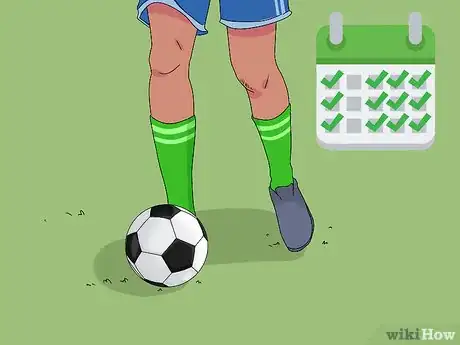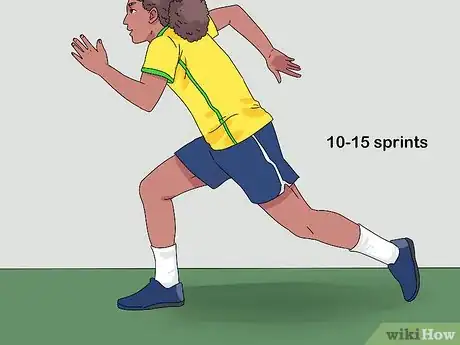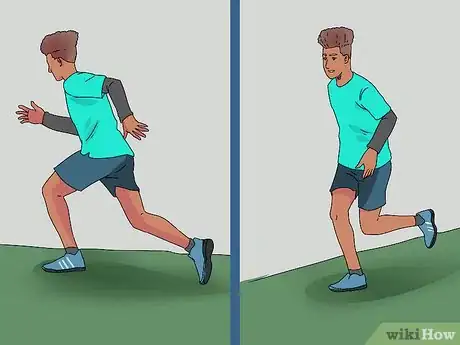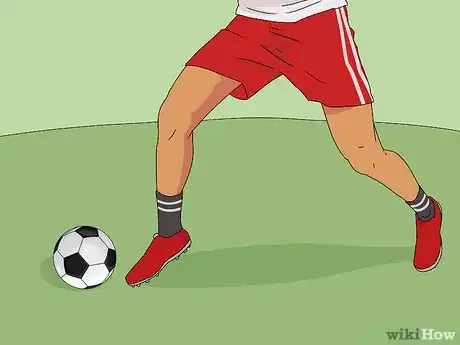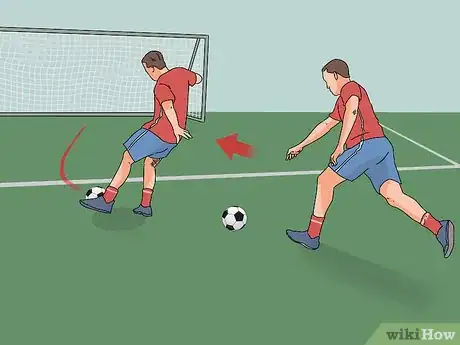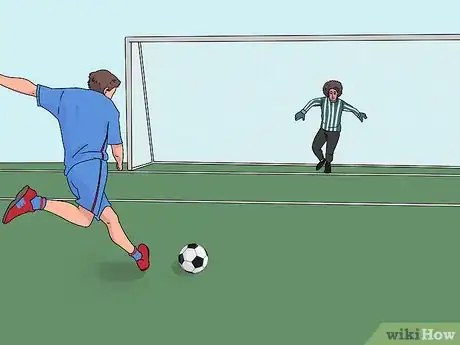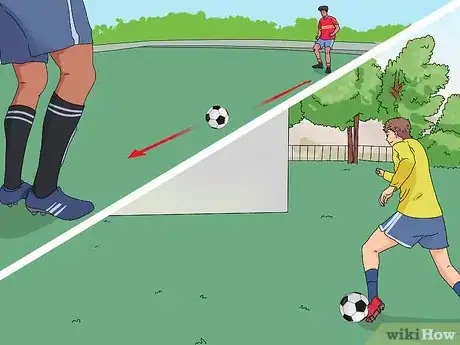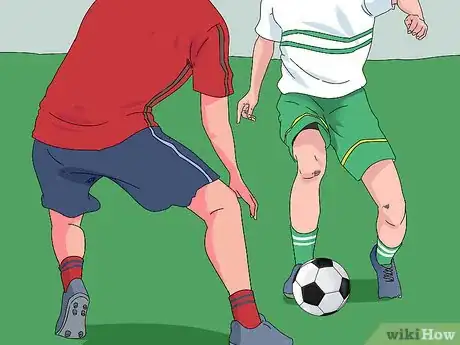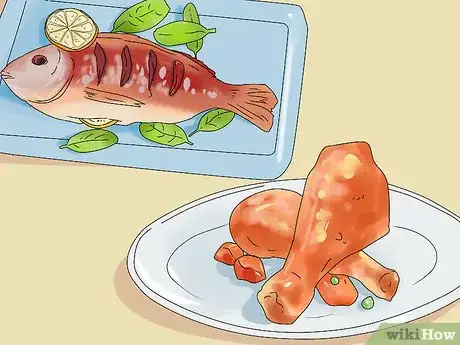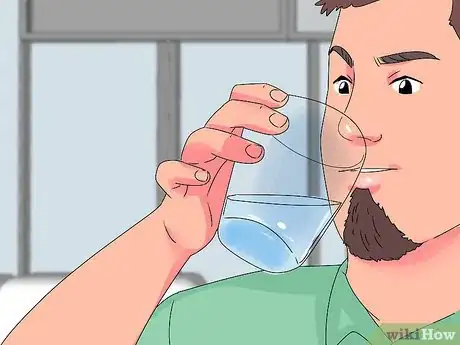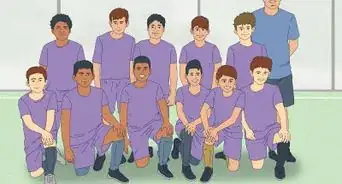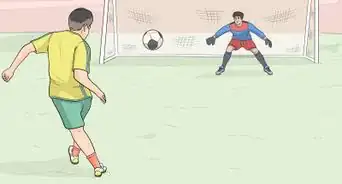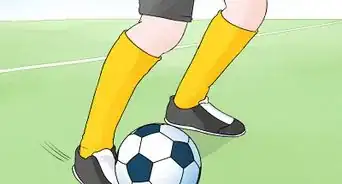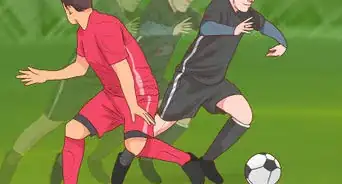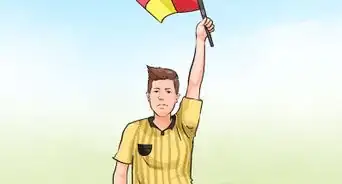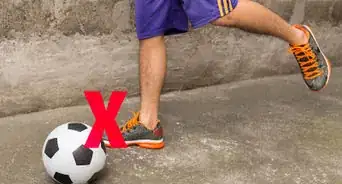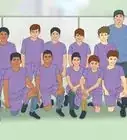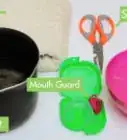This article was co-authored by Bernat Franquesa. Bernat Franquesa is the Co-Founder and Head of Methodology at APFC (Albert Puig Football Concepts), a youth development program for players and coaches with headquarters in San Diego, California. APFC provides soccer training for youth and educational content and consulting services for coaches, academies, and clubs. At APFC, Bernat is responsible for co-developing and applying technical guidelines for player development programs. He has been coaching soccer in Catalunya and the US since he was 15 years old.
This article has been viewed 104,701 times.
To successfully try out for a soccer team, you need to make sure you have the endurance to last a full 90-minute match. In addition to building your endurance to get in shape for soccer tryouts, it’s also important to practice your technical skills to catch the coach's eyes. Dedicate yourself to train for endurance and skill at least 3-4 days a week and you will have a good chance of making the team!
Steps
Building Your Endurance
-
1Train 3-4 days a week leading up to your tryouts to get in shape. This will help you build your stamina to play soccer at high intensity. Soccer players run up to 8 mi (13 km) in a single 90-minute match, so you need to have the endurance to last for the whole game.[1]
- Include a mix of cardio workouts and skill workouts each day that you train to simulate what it will be like when you actually play soccer.
-
2Run or jog for 30-60 minutes each workout. Running and jogging are the most important exercises for you to build up your cardio conditioning. Run outside for 30-60 minutes each time you train as your principal cardio exercise.[2]
- If you can, then use a heart rate monitor to make sure you are spending the right amount of energy to build your endurance. The majority of your cardio should keep your heart rate between 65-70% of your maximum heart rate.
- Running outdoors (as opposed to on a treadmill) will expend more energy to build up your endurance faster.
Advertisement -
3Do 10-15 sprints each time you workout with 30-second rests in between. Quick sprints followed by short breaks are just as important to improving your endurance as steady cardio is. Practice 20-yard (18.29-meter) dashes on a field that already has distance markers, or somewhere you can place a cone or some other sort of marker to measure your sprints.[3]
- 10-15% of a soccer game will be spent sprinting, so these exercises will train your body to start and stop quickly repeated times.
-
4Alternate high-intensity exercise with low-intensity exercise. Incorporate this kind of interval training into each workout you do. Alternate a low-intensity exercise, like jogging, with a high-intensity exercise like sprints.[4]
- This type of interval training allows your body to adjust to quickly changing situations, as it will need to do during a soccer match. It also helps you train your endurance without putting excessive strain on your body muscles.
Tip: Many pro athletes adhere to the 80/20 rule. 80% of their exercise is low-impact, and the other 20% is middle or high-impact
Practicing Your Technical Skills
-
1Practice running while dribbling a soccer ball. Do a drill like dribbling a ball for 30–40 yards (27–37 m), then run another 30–40 yards (27–37 m) at a high speed, then turn around and run back to the ball, and dribble it another 30–40 yards (27–37 m). Rest for 1-2 minutes and repeat the drill.[5]
- This type of drill will help train you to switch between running with the ball and running alone. It will also help improve your dribbling skills so that you are less likely to trip over the ball or lose control of it during a match.
Tip: Set up cones to represent defenders and practice dribbling around them, or even improvise and use trees or other natural obstacles as imaginary defenders.
-
2Hone your shooting skills by shooting at a goal on the run. Practice alone if you have to, and even better with a friend acting as goalie if you can. Run towards the goal at various angles and practice shooting the ball in.[6]
- If you have multiple friends you can practice with, then practice passing and one-touch shooting as well.
-
3Stand in front of a goal and practice penalty kicks. Place the ball down and take 3-4 steps back. Pick different spots in the goal to aim at and practice shooting the ball in.[7]
- You can do this without a goalie. Most failed penalty shots are the result of a missed shot, rather than a goalie saving the shot.
-
4Work on your passing and trapping skills against a wall with both feet. Kick a soccer ball against a wall from various distances, at different heights, and with different levels of power. Practice trapping it with different areas of your body and passing it with both feet.[8]
- Your ability to pass and control the ball is something coaches will be keeping a close eye on during tryouts.
-
5Play pickup soccer matches to practice your skills in a live game. One of the best ways to get in shape quickly for soccer tryouts is to play! Find a local group to play with or put together a group of friends to practice with.[9]
- Don’t worry if you can’t find enough people to play a full 11-on-11 match. Play with smaller teams in a smaller area. Smaller matches are more fast-paced and will allow you more time with the ball to practice and get in shape for your tryouts.
EXPERT TIPBernat Franquesa is the Co-Founder and Head of Methodology at APFC (Albert Puig Football Concepts), a youth development program for players and coaches with headquarters in San Diego, California. APFC provides soccer training for youth and educational content and consulting services for coaches, academies, and clubs. At APFC, Bernat is responsible for co-developing and applying technical guidelines for player development programs. He has been coaching soccer in Catalunya and the US since he was 15 years old.Licensed Soccer Coach & Head of Methodology at APFC
 Bernat Franquesa
Bernat Franquesa
Licensed Soccer Coach & Head of Methodology at APFCOur Expert Agrees: The best way to get your body in shape is by actually playing the game. You have to stop suddenly, and you'll likely have to run back, forth, and to the sides. It's a totally different type of workout than just running laps, for instance.
Making Dietary Changes to Get in Shape
-
1Start a healthy diet leading up to your soccer tryouts. Diet plays a big role in your overall physical health and endurance. Eat a well-balanced diet of nutritious foods every day.[10]
- Stay away from fast food and high-sugar content foods. Incorporate lots of fresh fruits and vegetables in your daily diet. Things like olive oil and avocados are good sources of healthy fats.
-
2Eat carbohydrates before you train to give yourself lots of energy. Carbs are the body's fuel. Eat things like pasta, potatoes, whole grains, and rice before your workouts to load up on energy to burn.[11]
- These are also good foods to eat on the day of your tryouts to ensure that you have all the energy you need to perform at your best.
-
3Eat protein after you train to help your muscles recover quickly. Eat meals that have mainly lean proteins like fish and chicken. Consume healthy high-protein snacks, such as Greek yogurt and nuts, right after workouts.[12]
- The sooner you eat protein after a workout, the better your body will be able to absorb it to repair your muscles. Try to always have a quick protein-heavy snack right after a workout, followed by a healthy meal that includes lean protein later on.
-
4Drink lots of water when you work out and throughout the day. Stay fully hydrated while you train to maximize your results. Stay away from soda and other sugary drinks.[13]
- Drinks with high sugar content or lots of caffeine will dehydrate you and hurt your performance, both during training and on the field during tryouts.
- You can also hydrate with sports drinks during and after training, but don't get in the habit of replacing water with them throughout the day.
Community Q&A
-
QuestionShould I run first or do drills first?
 Community AnswerYou can do them in whatever order you prefer. Running may tire you out more, so you might want to consider doing the drills first.
Community AnswerYou can do them in whatever order you prefer. Running may tire you out more, so you might want to consider doing the drills first. -
QuestionHow many push ups should I do?
 Community AnswerThis depends how many you are able to do. Start with your maximum and when that becomes easy, work up to more.
Community AnswerThis depends how many you are able to do. Start with your maximum and when that becomes easy, work up to more. -
QuestionAre push-ups necessary for soccer?
 CliGibbs27Community AnswerPush-ups not only help you to get a stronger upper body, but also a stronger midsection. I recommend you do them.
CliGibbs27Community AnswerPush-ups not only help you to get a stronger upper body, but also a stronger midsection. I recommend you do them.
References
- ↑ https://www.sportsrec.com/81296-train-soccer-tryouts.html
- ↑ https://www.stack.com/a/3-ways-to-build-soccer-endurance
- ↑ https://www.stack.com/a/3-ways-to-build-soccer-endurance
- ↑ https://www.stack.com/a/3-ways-to-build-soccer-endurance
- ↑ https://www.stack.com/a/3-ways-to-build-soccer-endurance
- ↑ https://www.soccertoday.com/how-to-prepare-for-youth-soccer-tryouts/
- ↑ https://www.soccertoday.com/how-to-prepare-for-youth-soccer-tryouts/
- ↑ https://www.sportsrec.com/81296-train-soccer-tryouts.html
- ↑ http://discoversoccer.info/how-can-i-get-in-shape-for-soccer-quickly/
